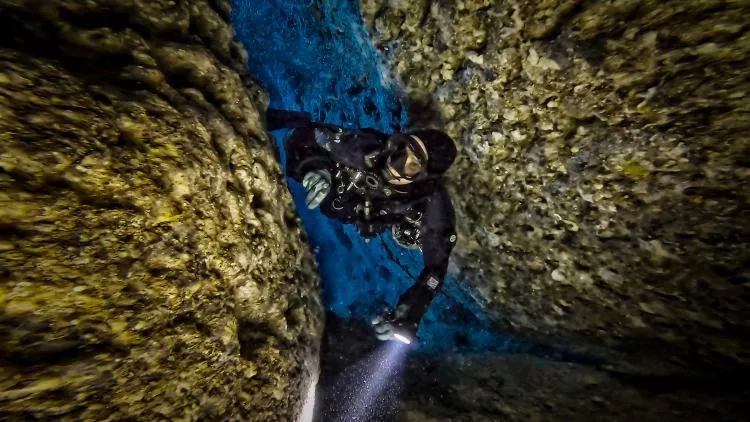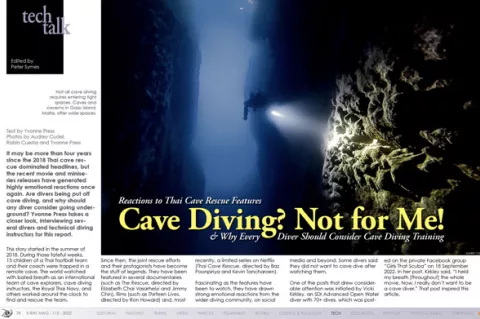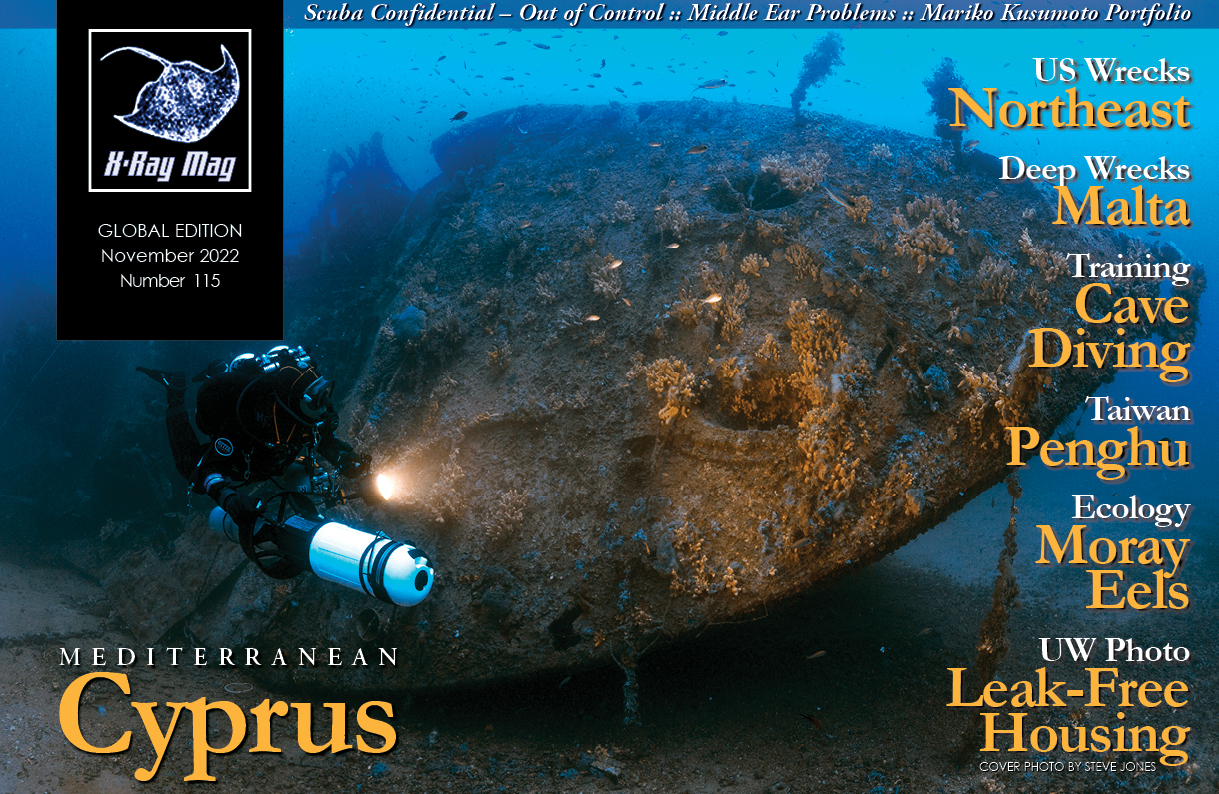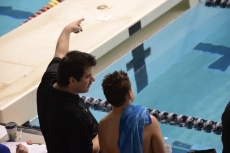It may be more than four years since the 2018 Thai cave rescue dominated headlines, but the recent movie and miniseries releases have generated highly emotional reactions once again. Are divers being put off cave diving, and why should any diver consider going underground? Yvonne Press takes a closer look, interviewing several divers and technical diving instructors for this report.
Contributed by
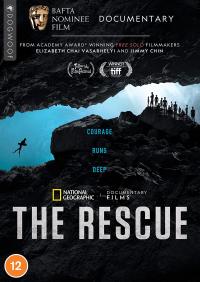
This story started in the summer of 2018. During those fateful weeks, 13 children of a Thai football team and their coach were trapped in a remote cave. The world watched with bated breath as an international team of cave explorers, cave diving instructors, the Royal Thai Navy, and others worked around the clock to find and rescue the team.
Since then, the joint rescue efforts and their protagonists have become the stuff of legends. They have been featured in several documentaries (such as The Rescue, directed by Elizabeth Chai Vasarhelyi and Jimmy Chin), films (such as Thirteen Lives, directed by Ron Howard) and, most recently, a limited series on Netflix (Thai Cave Rescue, directed by Baz Poonpiriya and Kevin Tancharoen).
Fascinating as the features have been to watch, they have drawn strong emotional reactions from the wider diving community, on social media and beyond. Some divers said they did not want to cave dive after watching them.
One of the posts that drew considerable attention was initiated by Vicki Kirkley, an SDI Advanced Open Water diver with 70+ dives, which was posted on the private Facebook group “Girls That Scuba” on 18 September 2022. In her post, Kirkley said, “I held my breath [throughout] the whole movie. Now, I really don’t want to be a cave diver.” That post inspired this article.
A few weeks later, I interviewed Kirkley. She told me that a personal connection convinced her to watch the movie. “A friend of mine is the sister of Major Hodges, one of the organisers of the rescue,” said Kirkley. “I watched the movie because she recommended it, even though his character did not have a main role.”
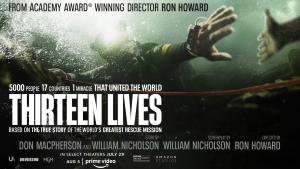
Despite expecting the movie to be full of suspense, Kirkley was not prepared for what she saw. “I knew that divers did the rescue, [but] I was surprised by the realness of the set. It felt so real,” she said. Achieving that degree of authenticity is a compliment to the filmmakers, but it has deterred Kirkley even more from venturing into overhead environments.
“Caves are absolutely gorgeous, and I love to watch videos and see them that way,” said Kirkley. “But I have no desire to actually dive through a true cave . . . The thought of being underground, away from the surface, with no quick way out, terrifies me!”
Scotland-based CCR diver and PADI instructor Claire Simpson felt the same way. “I don’t think I would be keen on doing any of the tight stuff,” Simpson said, “and the idea of sump diving definitely does not appeal [to me] anymore after the films.”
Instead, the films reinforced some of Simpson’s previous ideas about cave diving. “[The films] may have cemented the idea that some cave diving isn’t very glamorous or has lovely architecture,” she said. “In fact, it can be downright unpleasant.”
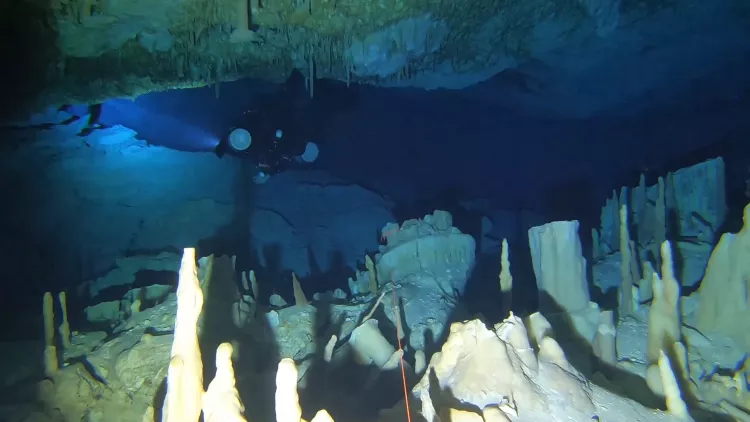
According to the pros
This is where cave diving pros are quick to point out that cave rescues are not the same as “normal” cave dives, which thousands of divers complete every year. Robin Cuesta, who is a cave explorer and cave diving instructor based in Sulawesi, Indonesia, pointed out, “In the movie [Thirteen Lives], we’re seeing the worst of cave diving—low visibility, narrow passages, high flow and an unknown route.”
Cave diving instructor and dive centre owner Alessandra Figari was among those commenting on Kirkley’s original post. She highlighted the differences between the caves near her base in Mexico and what we see on screen. “We dive flooded caves where passages lead from big to small, for sure, but nothing as shown in the movie,” Figari said.
“While the flow is low in Mexico and constant in Florida pushing you out, what happened in the Thai cave is different,” said Figari. “It is a dry cave which filled up with water with a lot of strength. Since our caves in Mexico are usually full of water, there is not a significant change in conditions when it rains.”
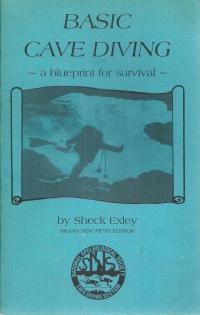
Whilst the worst possible conditions came together for the Thai cave rescue, they couldn’t be further from what most cave divers do. “Cave diving doesn’t require diving in narrow, silty, zero-vis, tight passages,” Cuesta said. “Even though we need to train for conditions like that, you could spend your whole life as a cave diver diving in large openings with crystal-clear visibility.”
Malta-based cave diver, explorer and instructor Audrey Cudel agreed that the Thai cave rescue did not resemble “normal” cave diving. “Apart from rare organisations such as the UK Cave Diving Group (CDG) performing cave rescue exercises regularly, I have not heard much about other cave rescue programmes that develop both a mindset and skillset to face events such as the Thai cave’s one,” said Cudel. “This is a major difference between what I do, what I teach, and the context of the rescue.
“I train myself and my fellow students to answer the most efficient way, both psychologically and practically, all possible problems they might encounter not to have to be rescued by anyone,” continued Cudel. “In other words, how to avoid putting themselves in a hazardous situation and, worst case, how to rescue themselves. Such training and all subsequent skills involved are the outcome of past accident analysis—Sheck Exley’s masterpiece, Basic Cave Diving: A Blueprint for Survival, being the foundation of it.
“Cave diving in the context of the Thai event requires that such skillset is already mastered for one to learn how to compose with unparalleled elements and become a rescuer for others, understanding that [one] is putting [one’s] own life willingly at risk,” said Cudel.
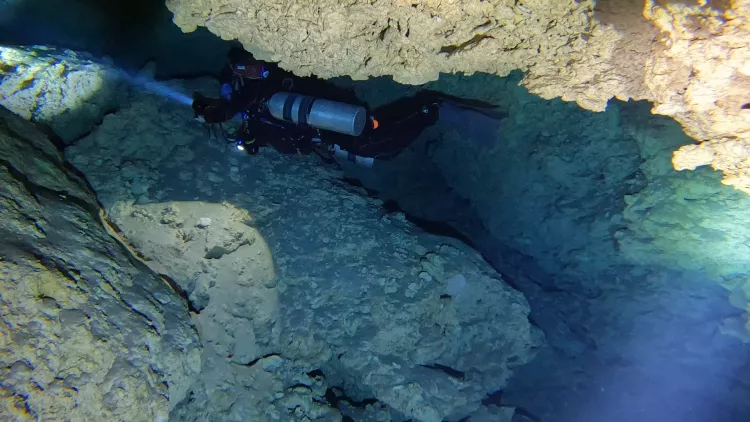
Perception
Perhaps perception plays a bigger role than previously thought. “I do perceive cave diving as much higher risk than other types of diving,” said Simpson. However, she admitted that more recently, several of her beliefs about cave diving have been shifting.
“I have long had this perception—which is recently being challenged—that cave diving is about getting into small spaces,” said Simpson. “That’s really not something that I would be able to do physically, but I am becoming aware that there are all sorts of caves that don’t have tight squeezes.”
Tight squeezes like the ones we see in the Thai cave rescue documentaries, movies and series are also a dealbreaker for technical diver Eddie Adie, who, like Simpson, spends most of his time in the colder waters around Scotland. “Seeing the cave rescue in documentaries and the movie has given me a respect for the skills and mental fortitude of those who choose to go cave diving,” said Adie.
Fellow technical diver and PADI instructor Menno Verschuur noted that the movies have shed light on the skillset of cave divers and explorers: “They are bringing together elements of top-level diving, natural explorations, planning and self-discovery—pushing yourself to new limits that you didn’t know your mind and body could achieve.”
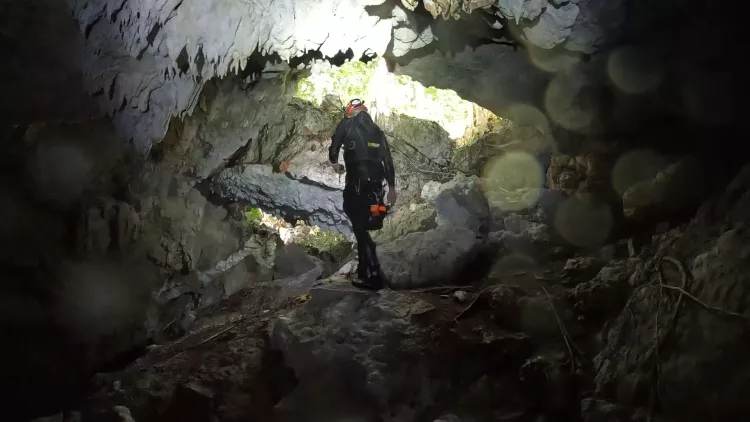
Medical aspect
For Simpson, who works as a consultant hand surgeon when she is not underwater, the medical aspect of the rescue was the part that kept her on the edge of her seat. “My colleagues know I’m a diver, so they were asking loads of questions about how they did it,” said Simpson. “I think, at the time, I admitted that I wasn’t sure how it was done, but the kids would either have had to be taught to dive or be sedated. Neither option seemed possible.”
Simpson attended Eurotek 2018 to see the entire Thai cave rescue team recount their experiences on-stage, including Australian anaesthetist and cave diver Richard Harris. “My heart went out to Richard Harris at the thought of the weight of responsibility on his shoulders,” said Simpson. “It was his recounting that brought me to tears.”
Cave instructor Figari admitted that some divers may be put off cave diving, thinking it is too much or too scary. But she also believes the movies showed a very positive side of the sport. “Many people are admiring the job done by the cave rescuers and the work carried out by everyone involved,” said Figari. “I think it showed organisation, ability to plan and determination. We teach all these things when teaching a cave course.”
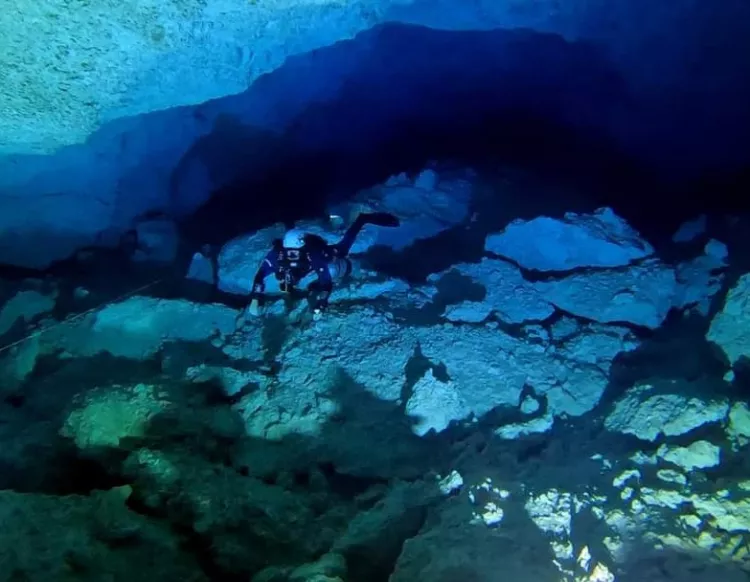
Takeaways
Whether the documentaries, the miniseries and the movie inspired respect, instilled fear, or simply provided more information, all the divers I talked to for this article agreed that they could benefit from developing their skills as cave divers do.
Instructor Cuesta agreed that cave diving greatly improves any diver’s foundational skills, but he is also quick to add that cave diving is not for everybody. “It is misleading to think that cave diving is the ultimate goal to accomplish when you start venturing into the technical diving realm,” Cuesta said. “You can learn those skills in other courses also, as long as you pick quality training and don’t rush into the certifications.”
Both Adie and Simpson mentioned how important quality training is for them. For Adie, that meant venturing into overhead environments with an instructor whom he could trust. Simpson admitted that she is coming around to the idea of trying cave diving. “I think I would have to find a good fit of instructor,” she said. “Knowing who that is isn’t easy without meeting and/or diving with them.”
Trust in her instructor is high on Kirkley’s list, too. As she is progressing through her rescue diver qualifications, her sights are firmly set on becoming a dive professional. For that goal, expanding skills matters. “As a future instructor, I feel it is important to educate [oneself] as much as possible, in addition to diving—safely and within your limits—as many different profiles as you can,” said Kirkley.
Perhaps there is a positive side to the tentative reactions the Thai cave rescue generated. Cuesta believes cave diving is simply not for everyone. “People that are put off by watching the movie were probably not ready to get into cave diving,” he said. “In a way, it is good that the movies and documentaries are making them second-guess their choices.”
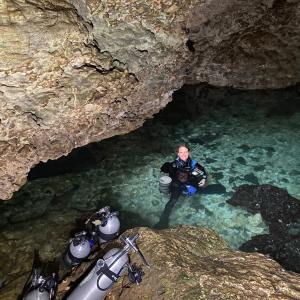
Cudel echoes those thoughts. “As a cave diver, explorer and instructor, I worry sometimes seeing that the emphasis of media coverage in general has trivialised the practice into a random diving speciality. Cave diving is [not that], nor a sport. It is a privilege,” Cudel said. “As such, it holds risks that not even the best training can overcome and shall discourage those who are not willing to pay the cost.” Put simply—if you feel cave diving is not for you, then don’t do it!
The author wishes to thank Audrey Cudel, Robin Cuesta and Alessandra Figari for their professional input. Thanks go to Vicki Kirkley, Eddie Adie, Claire Simpson and Menno Verschuur for sharing their views.

